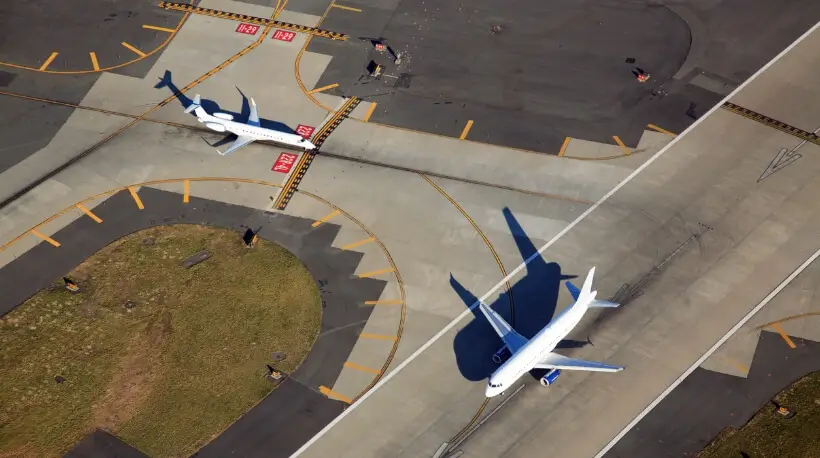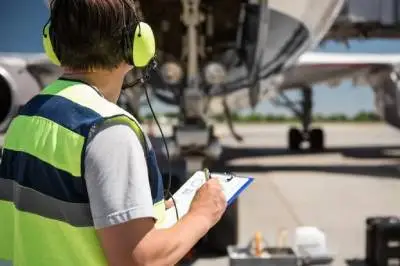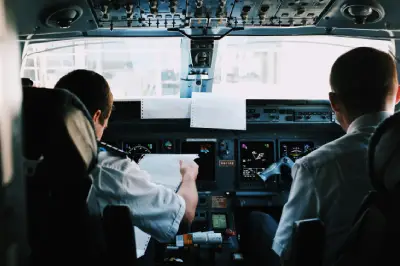This article serves as a comprehensive guide to understanding the importance of aviation weather briefings for flight safety, detailing how to obtain, decode and apply these briefings to flight planning and decision-making.

For any pilot, whether seasoned or just starting out, the weather briefing is an indispensable tool in the flight preparation toolkit. It's not just a formality; it's a necessity for safe flying. An effective aviation weather briefing provides a comprehensive overview of the conditions you'll face before taking off and while in the air.
From outlook briefings that give you a glimpse into future weather patterns to detailed reports tailored for your specific route and altitude, the importance of understanding the weather for flight planning cannot be overstated. It's about making informed decisions, minimizing risks and ensuring every journey through the skies is as smooth as possible. So, before you set your course and throttle up, let's examine why the aviation weather briefing should be your first check on the pre-flight checklist. Whether you're planning a cross-country trip or a training session in the local area, this is information you won't want to skip.
The Basics of Aviation Weather Briefings
Understanding the weather briefing is fundamental for every pilot, serving as a cornerstone of safe and informed flying. An aviation weather briefing is a detailed report that provides critical weather information relevant to your intended flight path and time.
The Federal Aviation Administration (FAA) sets forth specific regulations that pilots must follow related to weather briefings and flight planning. Key among these is FAR 91.103, which requires that pilots become familiar with all available information pertinent to a flight under Instrument Flight Rules (IFR) and, when operating under Visual Flight Rules (VFR), with weather reports and forecasts.
Weather briefings cover a range of data, including but not limited to weather phenomena, visibility, wind speeds and directions, temperature, cloud cover and precipitation. It also alerts pilots to significant or hazardous conditions that might affect the flight, such as thunderstorms, turbulence, icing and other critical weather updates.
How to Obtain an Aviation Weather Briefing
The accessibility of weather briefings has significantly improved with advancements in technology. Here are the primary ways to obtain one:
- Flight Service Stations (FSS): For those who prefer or require a more personal touch, contacting a Flight Service Station directly via phone provides an opportunity to speak with a briefer. This method is invaluable for gaining insights into complex weather reports and asking specific questions about your flight plan.
- Online Resources: Websites and online platforms provide comprehensive weather briefing services. These tools are often user-friendly, allowing pilots to customize their searches based on route, altitude and time.
- Apps: Various mobile applications are designed specifically for pilots, offering quick and easy access to weather briefings, forecasts, and alerts on the go.
Types of Weather Briefings
A pilot can request three main types of weather briefings: standard, abbreviated and outlook. Let's break down each type so you know which to request for your specific flight needs.
Standard Briefing
The standard briefing is a go-to option for pilots seeking a comprehensive overview of all anticipated weather conditions along their flight path. It's particularly recommended if you haven't received any prior briefing or if it's your first flight of the day. This briefing includes:
- Adverse Conditions: Information on any significant meteorological or aeronautical issues that could impact your flight.
- VFR Flight Not Recommended: If applicable, you'll be advised against VFR flights based on current or forecasted conditions.
- Synopsis: A broad overview of the current weather patterns affecting your route, including major fronts and pressure systems.
- Current Conditions: Observations and reports of current weather conditions at departure and destination points, as well as major stops in between.
- Enroute Forecast: Detailed forecasted weather conditions along your flight path, including any expected changes.
- Destination Forecast: Weather predictions for your destination at your estimated arrival time.
- Winds Aloft: Information on the expected wind speeds and directions at different altitudes along your route.
- Notices to Airmen (NOTAMs): Crucial updates about temporary changes to the airspace or facilities that might affect your flight.
Abbreviated Briefing
An abbreviated briefing is tailored for pilots who have already conducted a standard briefing but need updates or specific information on a particular aspect of the weather. This type of briefing is concise and focuses on addressing specific concerns or queries, such as:
- Updated Weather Conditions: The latest weather observations and forecasts have changed since your last briefing.
- Specific NOTAMs: New or updated NOTAMs issued after your initial briefing.
- Answering Specific Questions: Detailed information regarding a particular concern, such as icing conditions, turbulence or visibility along a segment of your flight path.
Outlook Briefing
The outlook briefing is designed for flights planned more than six hours in advance. It provides a general forecast and trend information, helping pilots in the early stages of flight planning. This briefing includes:
- General Weather Patterns: Overview of large-scale weather systems that might influence your flight plan in the next 24 to 48 hours.
- Trend Forecasts: Information on how weather conditions are expected to develop or change over time, focusing on the period around your planned flight.
- Preliminary Planning Information: Early insights that can help you make initial decisions about your flight route, timing and whether to anticipate any major weather-related adjustments.
Understanding the three types of briefings and when to request each can significantly enhance flight safety and planning efficiency. Pilots are encouraged to utilize the standard briefing for a thorough pre-flight check, resort to the abbreviated briefing for quick updates and lean on the outlook briefing for advanced planning. This comprehensive approach ensures that pilots are well-informed, prepared and ready to adapt to weather conditions.

Decoding the Weather Briefing
Now that you know what a weather briefing is and how to obtain the right type for your flight, you'll need to know how to interpret all the complex meteorological data you'll receive. This section aims to demystify the key elements, helping pilots to interpret and utilize this crucial information effectively. First, let's start with some key terms you should know:
- Meteorological Terminal Aviation Routine Weather Report (METARs): These are near-real-time reports that provide the current weather conditions at airports or weather stations. They include information on temperature, dew point, wind direction and speed, visibility, cloud cover and present weather phenomena. METARs are typically issued once an hour and are essential for assessing the current weather at your departure airport, en route and destination.
- Terminal Aerodrome Forecasts (TAFs): TAFs offer forecasts for specific airports, covering a 24 to 30-hour period, and are updated four times a day. They predict similar conditions to METARs but are focused on future conditions rather than current ones. Understanding TAFs is crucial for planning, as they give insights into expected weather changes at your destination and any alternate airports you might consider.
- Notices to Airmen (NOTAMs): These notices provide timely information about changes to the National Airspace System that affect flight operations, such as temporary airspace restrictions, construction on airports, changes in navigational aids and more. Some NOTAMs are included in weather briefings relevant to your specific flight route. Being aware of and understanding NOTAMs is critical for avoiding surprises that could affect the safety and legality of your flight.
Key Elements to Listen For
When receiving a weather briefing, there are several vital elements to listen for that directly impact flight planning and safety:
- Weather Phenomena: Be on the lookout for significant weather events such as thunderstorms, icing conditions or turbulence, which could influence your route or altitude decisions.
- Visibility: Visibility conditions can drastically affect your ability to fly under VFR. It's important to note any forecasted changes along your route.
- Wind: Wind direction and speed at your departure and destination, as well as aloft, can affect your flight time and fuel consumption. It's also crucial for takeoff and landing planning.
- Significant Weather Changes: Any forecasted changes in weather conditions during your flight time are crucial. This includes fronts moving through, changes in precipitation or shifts in wind patterns.
- Temperature and Dew Point: These can give you insight into potential icing conditions or fog formation, especially during colder months or night flights.
Note: Ignoring weather advisories can have serious legal implications. In the event of an incident or accident, failure to adhere to weather-related regulations can result in FAA enforcement actions, including fines, suspension of pilot licenses or other penalties. More importantly, neglecting weather advisories compromises the safety of everyone aboard the aircraft and potentially others in the air and on the ground.
See a Real Aviation Weather Briefing In Action
Want to see what it's like to call in an aviation weather briefing? Check out this short video to see the entire process from start to finish.
Frequently Asked Questions: Aviation Weather Briefing
If you have questions or would like to learn more about aviation weather briefings, check out the answers to our most commonly asked questions below.
How Accurate Are Aviation Weather Briefings?
Aviation weather briefings are based on the latest meteorological data and forecasts, making them highly accurate. However, weather can be inherently unpredictable, and conditions may change rapidly. Therefore, while briefings provide the best available information at the time, pilots should remain prepared for unforeseen changes.
How Can I Interpret Weather Briefings More Effectively?
Interpreting weather briefings effectively comes with experience and education. Familiarize yourself with meteorological terms and symbols used in briefings, such as those for weather phenomena, visibility and cloud cover. Utilize resources like online tutorials, weather workshops and advice from more experienced pilots to improve your skills.
Can I Fly Without Obtaining an Aviation Weather Briefing?
While technically you might be able to commence a flight without a formal weather briefing, doing so is strongly discouraged. It may violate FAA regulations, particularly FAR 91.103, which requires pilots to be familiar with all pertinent information before flying. Skipping a briefing compromises safety and informed decision-making.
Equip Yourself for Safety and Reliability at Air Power Inc.
Being prepared is not just about having the right information but also the right equipment. At Air Power Inc., we understand the importance of reliability and readiness in aviation, whether you're planning a routine flight or facing the unpredictability of weather conditions. Our comprehensive selection of aircraft parts and components ensures you're equipped to take on the skies safely, efficiently and confidently. From advanced weather tracking instruments to essential flight components, we provide everything you need to make informed decisions and keep your aircraft in top condition. Choose Air Power Inc. for your aviation needs, and stay safe, prepared and ready to fly at a moment's notice.
Shop Air Power Inc. Today
Related Articles: Pre-Flight Checks



